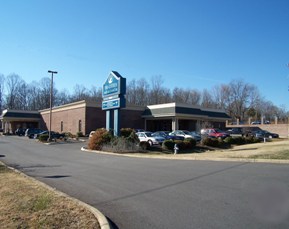What is Skin Cancer?
Skin cancers are malignant tumors of the skin that grow relentlessly if not treated. They can cause cosmetic disfigurement or even death if not diagnosed and treated promptly. The common types of skin cancers are basal cell, squamous cell, and melanoma. Collectively, more than 1 million of these tumors occur annually in the United States. The most significant factor causing skin cancer is excessive exposure to sunlight or ultraviolet radiation, particularly in fair-skinned individuals who have difficulty getting a tan.
What is Mohs Surgery?
Mohs Micrographic Surgery is a procedure named for its inventor, Dr. Frederic E. Mohs. By means of a special mapping and tissue processing procedure, Mohs micrographic surgery is used to track and remove the roots of a skin cancer that are invisible to the naked eye.
What are the Advantages Of Mohs Surgery?
Highest Cure Rate:
The cure rate for new, previously untreated, basal cell skin cancers is higher than 99%. The cure rate for even complicated or recurrent tumors is approximately 95%. Other methods have only 70-80% chance of eradicating recurrent basal cell skin cancer
Preservation of Maximum Normal Tissue:
The Maximum Amount of normal tissue is preserved so that the wound that is created and the resulting scar are as small as possible
Versatility:
The Technique is useful in a number of other skin tumors, which have been difficult to cure in the past.
Safety:
Surgery is usually performed in an outpatient setting under local anesthesia.
Are there disadvantages of Mohs Surgery?
1) Because successive layers of tissues are removed until no further tumor is found, the size of the surgical wound and the precise manner by which it will be repaired are not known beforehand.
2) The Mohs technique is designed to remove all tumors that are contiguous or joined together. If there are "skip areas" in the tumor, some of it may be missed. Of the few skin cancers that are not cured with a single Mohs operation, many are those with such "skip areas". These uncommon tumors have usually been treated unsuccessfully several times in the past and many require more than one Mohs procedure for eventual cure.
What are the risks with Mohs Surgery?
The major risks of any surgical procedure on the skin are bleeding, infection, scarring, and recurrence of the tumor. Occasionally the location or extent of the tumor is such that there is a risk of injury to motor nerves of the face. Fortunately, the latter generally occurs only with neglected or very aggressive cancers. More often, it is necessary to cut through branches of sensory nerves, producing an area of decreased sensation around the wound. After several months of healing, some or all of the sensation may return. Every effort is taken to insure that all skin cancer is removed, although some tumors can recur. Therefore, regular follow-up examinations are essential so that recurrences can be treated while they are still small. These examinations are also used to detect any new skin cancers that might be developing, as there is a 20% chance of another one forming at a different location within 5 years.
How is Mohs Surgery Performed?
The tumor is first anesthetized using local anesthetic. The bulk of the tumor is then removed creating a shallow wound. A thin saucer-shaped layer of tissue which contains the wound and only 2-3 millimeters of normal-appearing peripheral skin is then removed. This layer is cut into several pieces, each one numbered and color-coded. The layer is then placed on a slide and examined under a microscope. If any cancer remains on the slide, an additional layer is removed by cutting a little wider and deeper only from the areas that are still involved. These steps are repeated as many times as necessary until the cancer is tracked to its roots.
What can I expect on the day of Surgery?
Mohs surgery is carried out in a stepwise manner. Removal of the first layer of tissue can take from 15-20 minutes. A temporary dressing is applied to the wound, and the patient can move about or read while the slides are processed and examined. Normally 45 minutes to an hour are required for this examination to be completed. If a second layer of tissue must be removed, the above steps will be repeated. Finally, when all slides are clear of tumor, attention will be turned to the repair of the surgical defect. The repair may take from 30-90 minutes depending on the size and complexity of the wound. If reconstruction by a surgical specialist has been arranged, a secure dressing will be applied and the patient will be sent directly to his/her office. Most cases are completed within half a day.
Should I consider cosmetic reconstructive surgery?
The first duty of the Mohs surgeon is to remove the skin cancer completely. Cosmetic considerations are secondary. Fortunately, the tissue sparing effect of micrographic surgery usually makes it possible to achieve a favorable cosmetic outcome with immediate repair of the wound. Tumors that are large or complicated by the time they are treated carry a risk of significant disfigurement; however, every effort is made to achieve a satisfactory cosmetic result. Patients referred for Mohs surgery from a surgical specialist will usually be returned to that specialist for repair. In extreme cases, it is best to delay reconstruction of the wound until a period of observation has passed to insure that the cancer will not recur. In this situation, either a very thin skin graft is applied, or the wound is allowed to heal by itself. If a significant portion of the nose or ear is missing, a prosthesis can be worn in the meantime.
